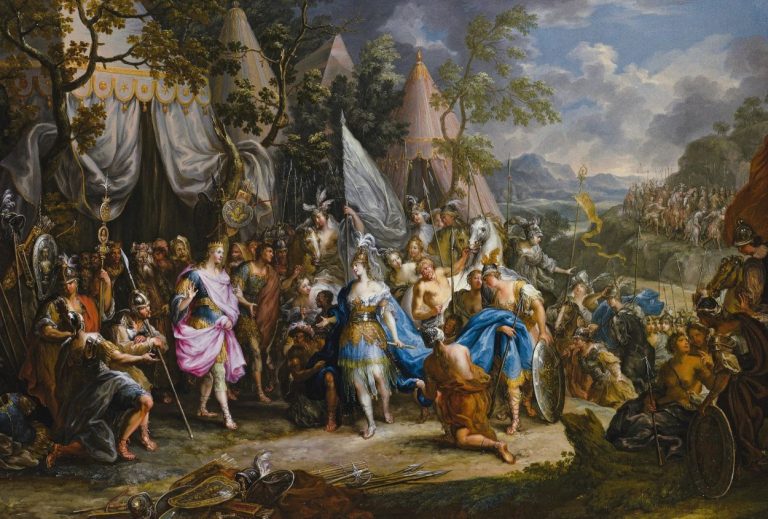
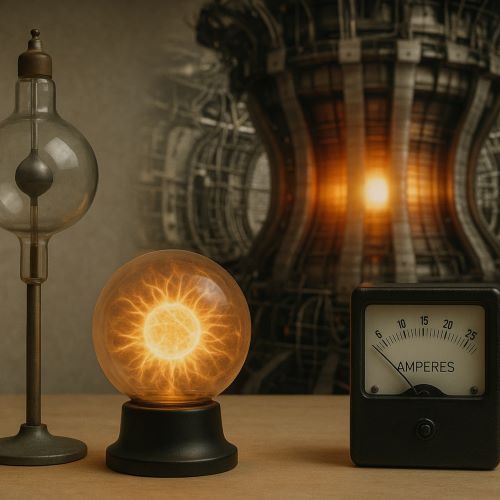
From Aston’s first measurements of mass defect to the sprawling complexity of ITER, fusion has promised to deliver the energy of the stars to Earth. It has not yet succeeded.

By Matthew A. McIntosh
Public Historian
Brewminate
Introduction: The Dream of Infinite Fire
The pursuit of fusion energy is, in many ways, the most audacious scientific endeavor of the modern age. It seeks nothing less than the harnessing of the same elemental force that powers stars, promising energy that is clean, safe, and virtually inexhaustible. Yet the history of fusion research is not a tale of linear progress. It is a story of recursive ambition, political entanglement, extraordinary failure, and periodic resurgence. From the early insights of mass-energy conversion in the 1920s to the sprawling multinational infrastructure of ITER in the twenty-first century, fusion energy has occupied a liminal space, hovering at the boundary of scientific feasibility and technological fantasy.
This essay traces the intellectual and institutional history of fusion energy research since 1920, beginning with Francis William Aston’s realization of mass deficits in atomic nuclei. It follows the evolving hopes and paradigms that have shaped this century-long quest, from Cold War secrecy to international collaboration, and from laser-induced implosions to doughnut-shaped magnetic traps. The trajectory of fusion science, though marked by stalled breakthroughs and uncertain timelines, illuminates not only the limits of human control over matter but also the enduring power of energy utopias in shaping modern technopolitics.
Atomic Alchemy: Aston and the Mass Defect
Francis William Aston and the Seeds of Fusion

In 1920, the British physicist Francis William Aston published a series of precise mass measurements of atomic nuclei using his newly developed mass spectrograph.1 His work revealed that the mass of a helium nucleus was slightly less than the combined mass of the four protons from which it could theoretically be assembled. This discrepancy, known as the “mass defect,” implied that energy must be released during the fusion process.2 Though the implications were not immediately clear, Aston noted with remarkable prescience that if the mass difference were ever “liberated and utilized,” the energy potential would dwarf anything then imaginable.
Aston’s insight built upon and extended the logic of Einstein’s famous equation, E = mc2. It hinted that the synthesis of light nuclei could be an immense source of energy, although the conditions necessary for such a reaction, extraordinary temperatures and pressures, were not yet understood. Aston was no engineer. His concern was the precision of measurement, not the practicality of reactors. Still, his findings laid the conceptual groundwork for the field of fusion energy research long before the term “fusion” entered the scientific lexicon.
Stellar Interiors and the Origins of Fusion Theory
The leap from laboratory data to astrophysical speculation was made soon after. In the same year, Arthur Eddington proposed that the sun’s energy might derive from the fusion of hydrogen into helium, linking nuclear physics with stellar thermodynamics.3 This cosmic hypothesis transformed fusion from a speculative byproduct of mass spectrometry into the centerpiece of stellar astrophysics. For the first time, the energy processes of the universe were placed within the reach of theoretical physics, if not yet engineering.
Fusion and Fission: War, Detonation, and Divergence
Hydrogen Bombs and the Shadow of Fusion
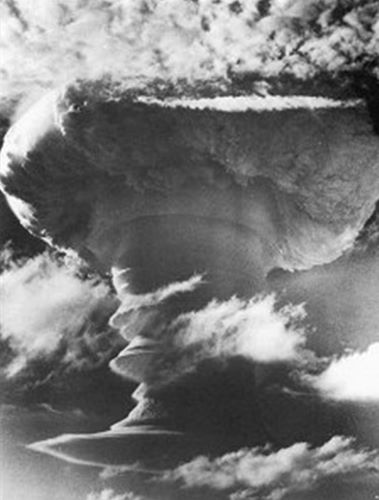
The dawn of nuclear weapons shifted fusion from theory to terrifying practice. The hydrogen bomb, or thermonuclear weapon, demonstrated that fusion reactions could be initiated in Earth-bound conditions, albeit only by using fission bombs as triggers. The first successful test, conducted by the United States in 1952 under the name “Ivy Mike,” fused isotopes of hydrogen in a massively destructive chain reaction.4
This success was paradoxical. It proved that fusion energy was real, but it also revealed its volatility and danger. The hydrogen bomb confirmed that fusion could release immense energy, but only in a format utterly unsuited to civilian use. The challenge became clear: how to tame the sun’s violence for peaceful purposes. This would prove to be a profoundly difficult proposition, one whose technical demands exceeded those of fission reactors and whose funding would depend on Cold War patronage.
Cold War Laboratories and the Birth of Plasma Physics
By the late 1940s and early 1950s, fusion research had become militarized. The United States, the Soviet Union, and the United Kingdom each developed classified programs aimed at harnessing fusion for power generation. These programs gave rise to the discipline of plasma physics, the study of ionized gases under high temperature, which became essential to understanding the conditions necessary for sustained fusion.5
The earliest experiments focused on magnetic confinement. The idea was to use magnetic fields to contain a plasma long enough for fusion reactions to occur, a task made difficult by the tendency of plasma to become unstable and leak energy. In Britain, the ZETA (Zero Energy Thermonuclear Assembly) experiment briefly caused a sensation in 1958 when researchers falsely believed they had achieved fusion.6 The claim was later retracted, but the episode demonstrated both the scientific ambition and political pressures surrounding fusion research in the Cold War era.
Confinement and Containment: The Long March Toward Breakeven
Tokamak Ascendancy and Soviet Leadership
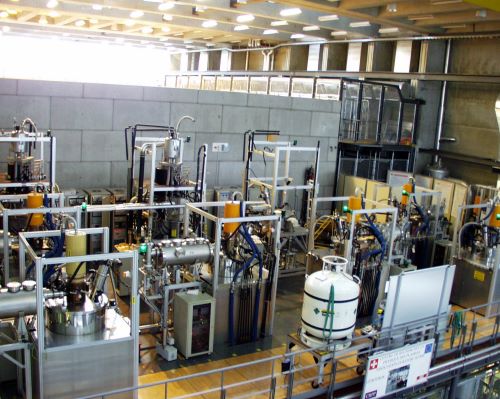
The Soviet Union made a pivotal contribution to fusion research in the 1960s with the development of the tokamak, a toroidal (doughnut-shaped) device that used strong magnetic fields to confine plasma. The T-3 tokamak in Moscow achieved plasma temperatures and confinement times that far surpassed previous attempts. When Western physicists visited the Soviet labs and confirmed the results, a wave of tokamak construction followed in the United States, Europe, and Japan.7
The tokamak became the dominant paradigm for fusion research by the 1970s, supplanting rival designs such as stellarators and magnetic mirrors. It offered the most promising path toward “breakeven,” the point at which a fusion reaction produces as much energy as it consumes. Yet breakeven remained elusive. Each new reactor, JET in the UK, TFTR at Princeton, JT-60 in Japan, pushed the boundary further, but none could cross it.8
Inertial Confinement and the Laser Frontier
In parallel with magnetic confinement, another approach emerged: inertial confinement fusion (ICF), in which powerful lasers or particle beams compress a small pellet of deuterium and tritium to initiate fusion. ICF drew heavily from weapons laboratories, especially Lawrence Livermore National Laboratory in California, where facilities like Shiva and later the National Ignition Facility were built.9
ICF promised a more compact and perhaps more scalable route to fusion, but it faced its own formidable challenges, particularly in achieving the necessary symmetry of implosion and minimizing energy loss. Despite decades of work and billions in investment, ICF too fell short of ignition, even as it generated increasingly sophisticated diagnostics and simulations.
Political Economies and the Energy Imaginary
Fusion as Policy Mirage
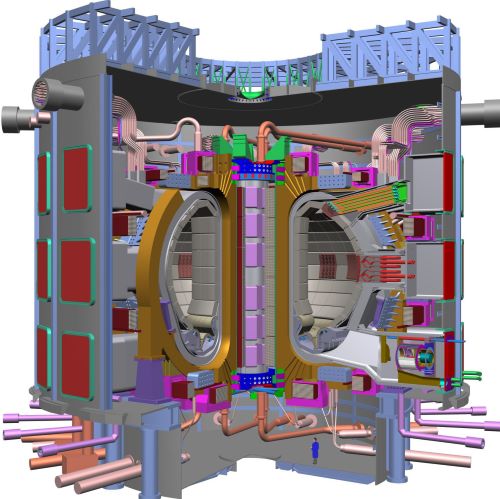
Throughout its history, fusion energy has been shadowed by overpromise. Scientists, politicians, and popular media repeatedly declared that commercial fusion was “just 30 years away.”10 This phrase, by now infamous, reveals not a lack of progress but the difficulty of translating scientific milestones into technological revolutions. Fusion’s immense potential made it politically irresistible, even as its complexity made it perpetually receding.
Fusion was also a victim of its own grandeur. It was too big for private enterprise, too long-term for electoral politics, and too scientific for popular understanding. Its budgets fluctuated with oil prices, national anxieties, and shifting partisan priorities. The lack of immediate payoff made it a soft target for funding cuts, despite its long-term promise. As one U.S. physicist lamented in 1983, “fusion is always at the mercy of someone else’s crisis.”11
ITER and the Globalization of Fusion
By the late twentieth century, fusion research had become a multinational enterprise. The International Thermonuclear Experimental Reactor (ITER), first proposed in 1985 and under construction since 2007, represents the most ambitious fusion project to date. Located in southern France and funded by a consortium including the EU, U.S., China, Russia, Japan, South Korea, and India, ITER seeks to demonstrate sustained fusion at energy gain.12
Yet ITER also exemplifies the bureaucratization of science. Its timeline has extended by decades, its costs have ballooned, and its geopolitical consensus remains fragile. Even if successful, ITER will not produce electricity. It is a proof of concept for the next generation, which may yet take decades to arrive.
Conclusion: The Radiant Future Deferred
The history of fusion energy is a history of hope, complication, and endurance. From Aston’s first measurements of mass defect to the sprawling complexity of ITER, fusion has promised to deliver the energy of the stars to Earth. It has not yet succeeded. And yet, in a sense, it has already transformed science, shaping fields from plasma physics to materials engineering, and training generations of researchers in the process.
Fusion is not a failure. It is a reminder of the scale of ambition necessary to reimagine civilization’s energy foundations. It forces a reckoning with time, with cost, and with the limits of technological determinism. Its long arc may yet culminate in power plants that produce no carbon, no waste, and no warheads. But even if that day remains distant, the pursuit itself has revealed much about the dreams and structures that define our modern world.
Appendix
Footnotes
- Francis W. Aston, The Constitution of the Elements, Nobel Lecture (December 12, 1922), https://www.nobelprize.org/uploads/2018/06/aston-lecture.pdf.
- Ibid.
- Arthur Eddington, The Internal Constitution of the Stars (Cambridge: Cambridge University Press, 1928), 212–217.
- Richard Rhodes, Dark Sun: The Making of the Hydrogen Bomb (New York: Simon & Schuster, 1995), 458–460.
- Spencer R. Weart, Scientists in Power (Cambridge: Harvard University Press, 1979), 164–169.
- John Gregory, “Mysteries of the ZETA Potential Examined,” Nature 295, no. 267 (1982).
- Brian Cathcart, The Fly in the Cathedral: How a Group of Cambridge Scientists Won the International Race to Split the Atom (New York: Farrar, Straus and Giroux, 2005), 276–278.
- Stephen O. Dean, Search for the Ultimate Energy Source: A History of the U.S. Fusion Energy Program (New York: Springer, 2013), 144–147.
- John Lindl, Inertial Confinement Fusion: The Quest for Ignition and Energy Gain Using Indirect Drive (New York: AIP Press, 1998), 92–95.
- Michael Edesess, “The False Hope Behind Nuclear Fusion,” Advisor Perspectives (2023), https://www.advisorperspectives.com/articles/2023/04/03/the-false-hope-behind-nuclear-fusion.
- Dean, Search for the Ultimate Energy Source, 168.
- ITER Organization, Project Milestones and Goals, accessed July 2025, https://www.iter.org/project/road-iter#event-us-delivers-fifth-central-solenoid-module.
Bibliography
- Aston, Francis W. The Constitution of the Elements. Nobel Lecture, 1922. Accessed via NobelPrize.org.
- Cathcart, Brian. The Fly in the Cathedral: How a Group of Cambridge Scientists Won the International Race to Split the Atom. New York: Farrar, Straus and Giroux, 2005.
- Dean, Stephen O. Search for the Ultimate Energy Source: A History of the U.S. Fusion Energy Program. New York: Springer, 2013.
- Eddington, Arthur. The Internal Constitution of the Stars. Cambridge: Cambridge University Press, 1928.
- ITER Organization. Project Milestones and Goals. Accessed July 2025. https://www.iter.org/project/road-iter#event-us-delivers-fifth-central-solenoid-module.
- Edesess, Michael. “The False Hope Behind Nuclear Fusion.” Advisor Perspectives (April 3, 2023), https://www.advisorperspectives.com/articles/2023/04/03/the-false-hope-behind-nuclear-fusion.
- Lindl, John. Inertial Confinement Fusion: The Quest for Ignition and Energy Gain Using Indirect Drive. New York: AIP Press, 1998.
- Gregory, John. “Mysteries of the ZETA Potential Examined.” Nature 295, no. 267, 1982.
- Rhodes, Richard. Dark Sun: The Making of the Hydrogen Bomb. New York: Simon & Schuster, 1995.
- Weart, Spencer R. Scientists in Power. Cambridge: Harvard University Press, 1979.
Originally published by Brewminate, 08.08.2025, under the terms of a Creative Commons Attribution-NonCommercial-NoDerivatives 4.0 International license.
